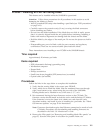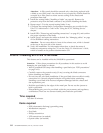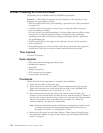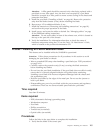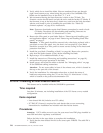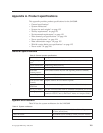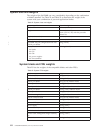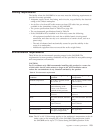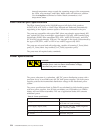
Appendix A. Product specifications
This appendix provides product specifications for the SAN384B.
v “General specifications”
v “System architecture”
v “System size and weights” on page 122
v “Facility requirements” on page 123
v “Environmental requirements” on page 123
v “Fibre channel port specifications” on page 124
v “Power specifications” on page 124
v “Data transmission ranges” on page 125
v “FR4-18i routing blade port specifications” on page 125
v “Power cords” on page 126
General specifications
Table 20. General product specifications
Specification Description
Configurable port
types
F_Port, FL_Port, E_Port, VEX_Port, VE_Port, EX_Port, and M_Port
System architecture Nonblocking shared memory
System processor FreeScale 8548, 1.2 GHz
ANSI Fibre
Channel protocol
FC-PH (Fibre Channel Physical and Signalling Interface standard)
Modes of operation Fibre Channel Class 2, Class 3, and Class F
Fabric initialization Complies with FC-SW 5.0
FC-IP (IP over Fibre
Channel)
Complies with FC-IP 2.3 of the FCA profile
Aggregate I/O
bandwidth
2 Tbps per chassis (fully populated with four FC8-64 blades)
Port to port latency Less than 2 microseconds with no contention (destination port is free)
Routing capacity A minimum aggregate routing capacity of four million frames per
second (for Class 2, Class 3, and Class F frames in a 64-port switch)
System architecture
Table 21 lists the system architecture for the SAN384B.
Table 21. System architecture
Fibre Channel Ports Up to 256 ports, universal (E_Port, F_Port, FL_port,
Ex_Port, and M_Port)
Control Processor Redundant (active/standby) control processor modules
Scalability Full fabric architecture: 239 switches maximum
© Copyright IBM Corp. 2009, 2010 119
|
|



